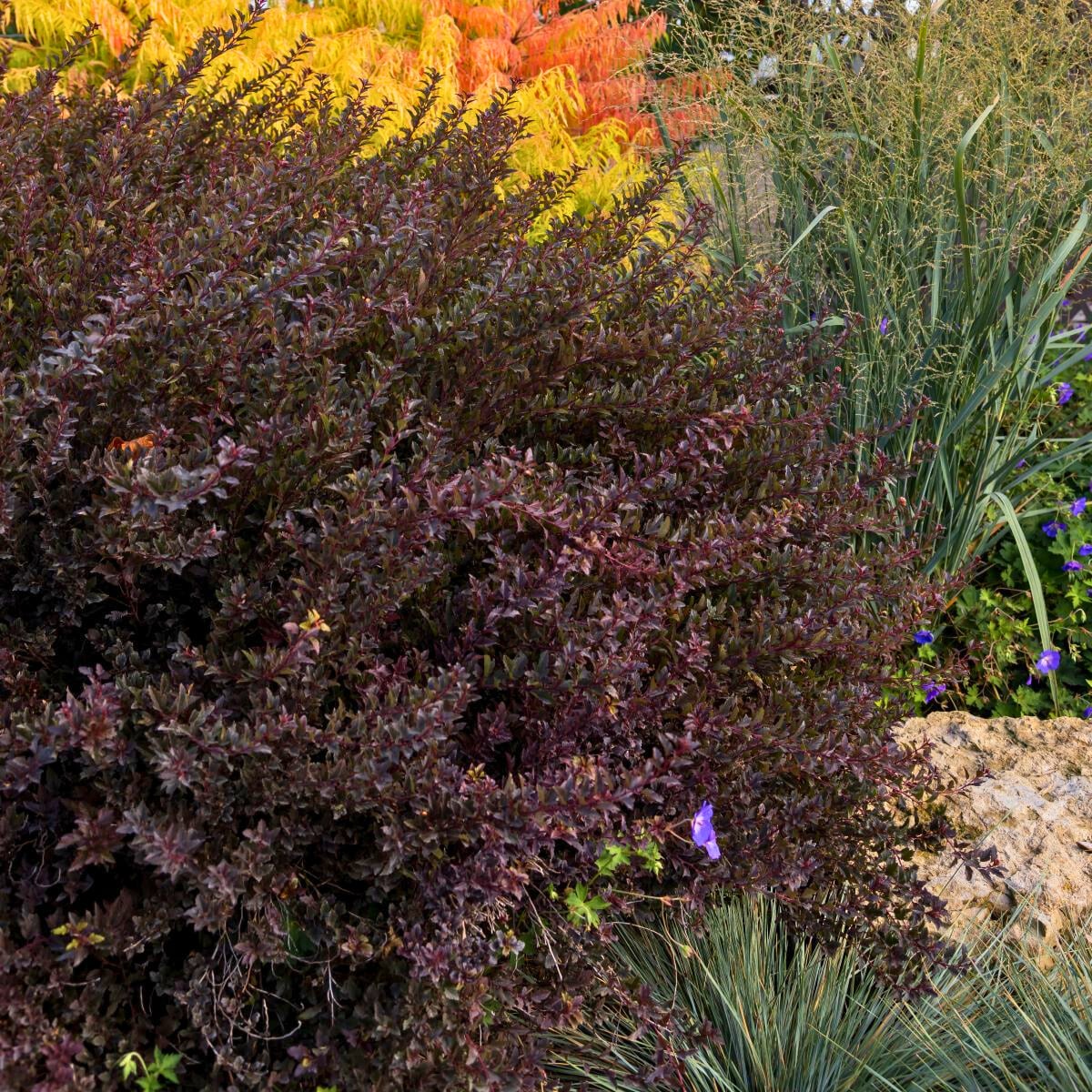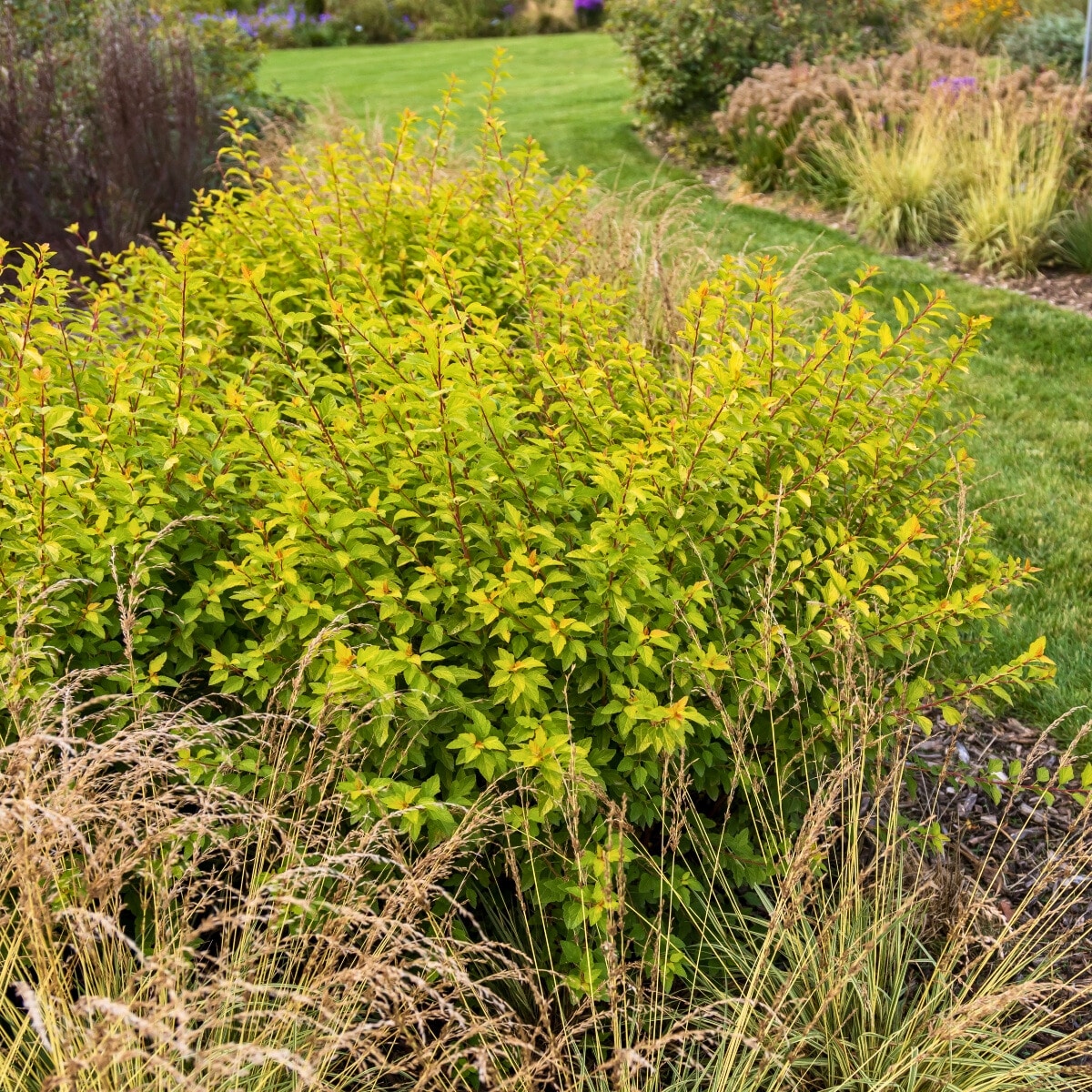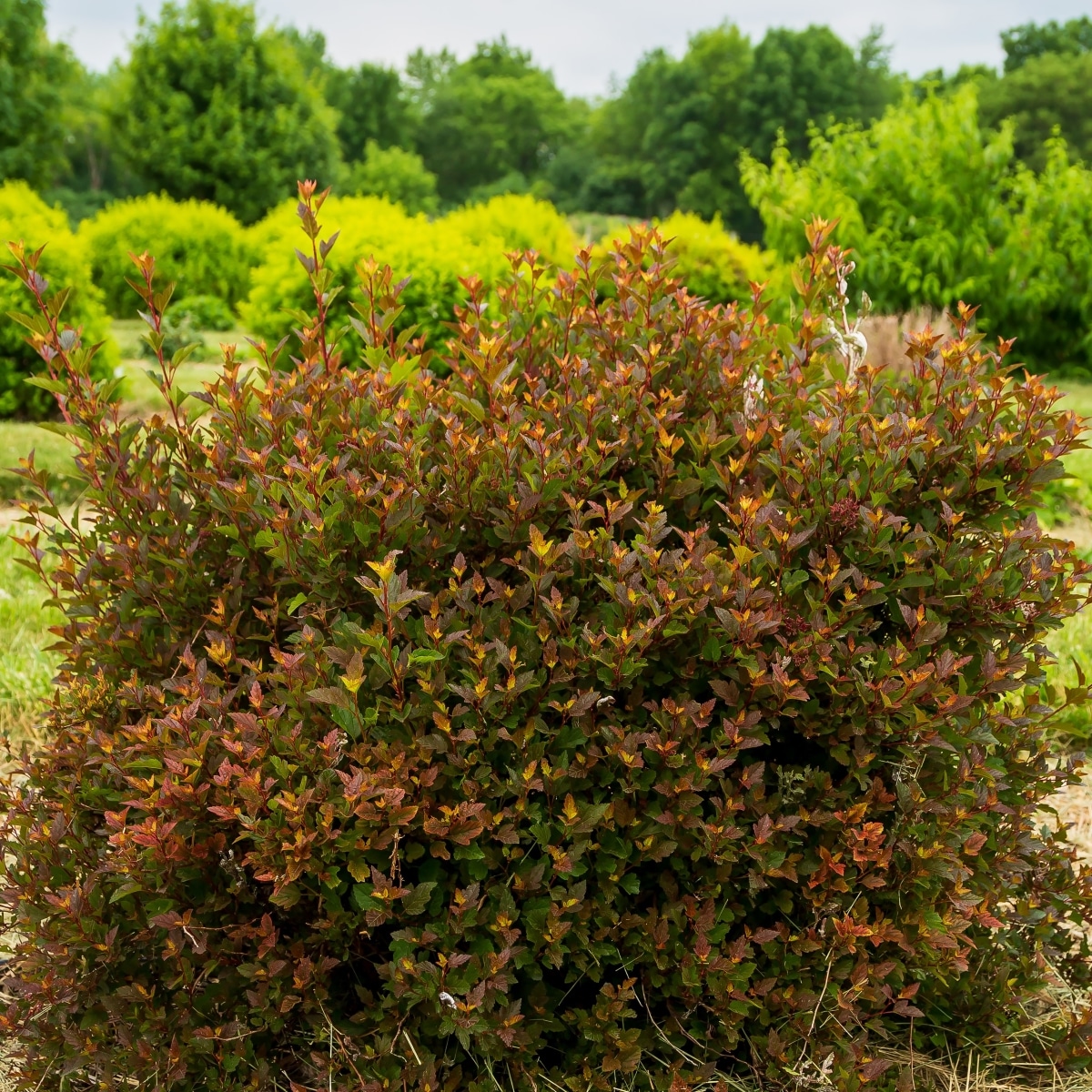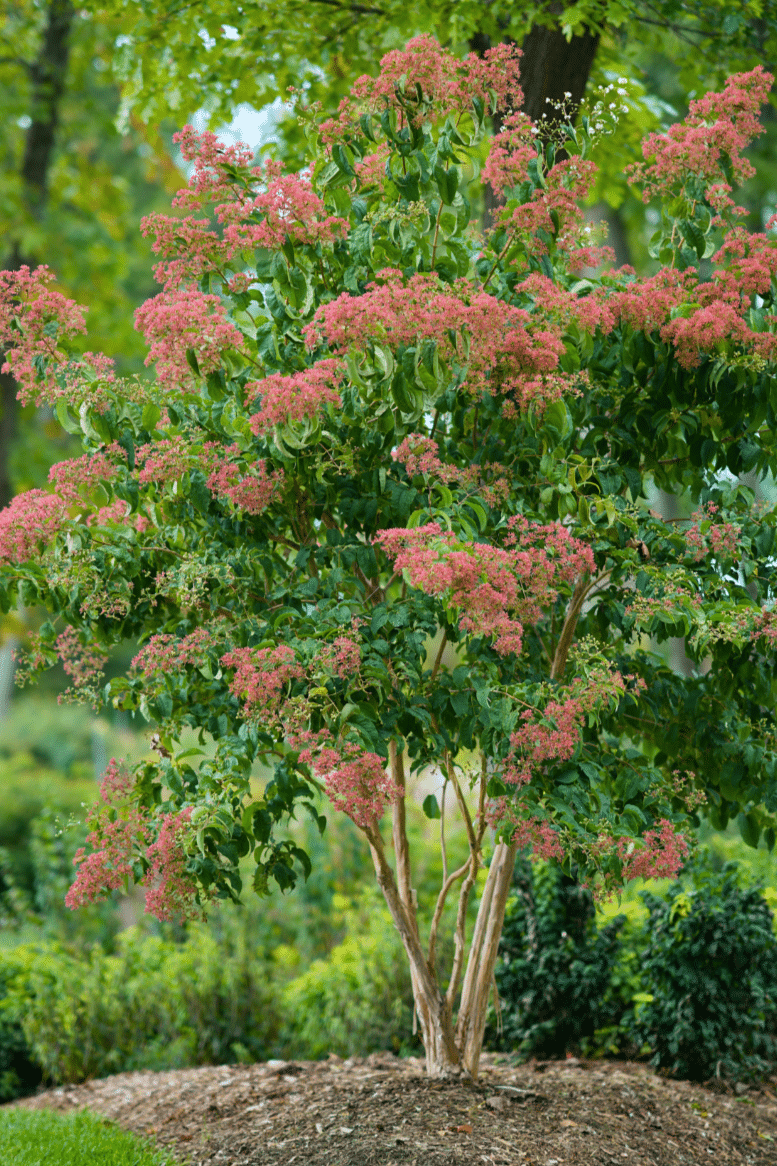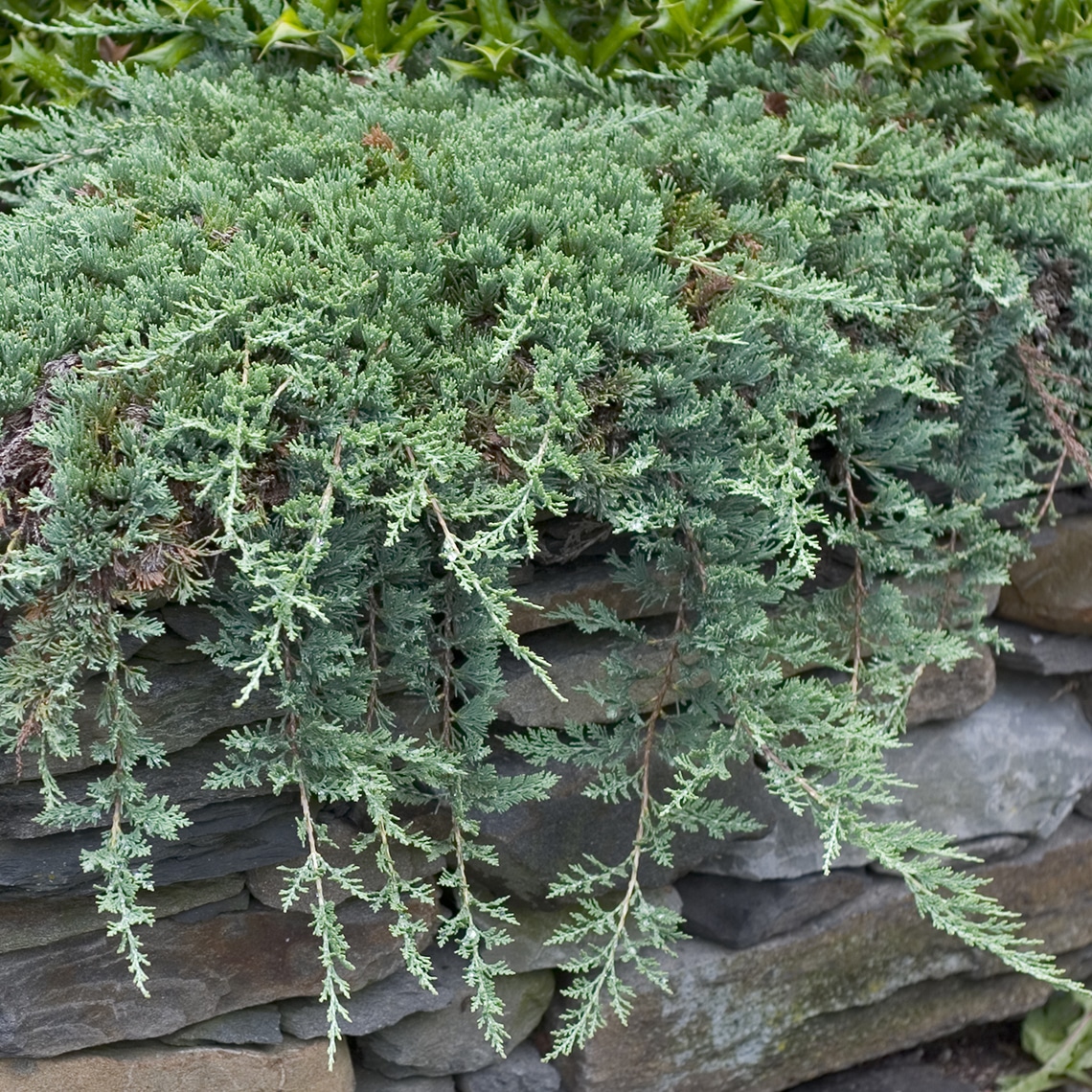Physocarpus opulifolius

A super-compact habit and tolerance of nearly any planting site are what made Little Devil Ninebark a landscape superstar. Following in its path are Lucky Devil and Spicy Devil- bringing a new range of color to the familiar plant! Pest resistant and low maintenance, the Little Devil series of ninebark requires little to no pruning and has few disease concerns. It adapts to both wet or dry soils as well as rock and clay. With pink to white blooms in late spring and colorful foliage spring through fall, this compact shrub makes an excellent specimen, hedge, or foundation plant.
Little Devil – The original. Fine-textured, dark foliage with pinkish white blooms. 3-4 ft tall and wide.
Lucky Devil – Golden yellow foliage that resembles a forsythia in spring. Appreciates afternoon shade in summer! 3-4 ft tall and wide.
Spicy Devil – Hot copper-tipped stems against dark burgundy foliage. 3-4 ft tall and wide.
- Ninebarks display the best color and compact growth in full sun, though they can tolerate some shade.
- While able to adapt to both dry and wet sites, Ninebarks don’t like flipping from one extreme to the other. Aim to maintain even soil moisture, especially in the heat of summer. Mixing compost into the soil and adding a layer of wood mulch will help prevent soil from drying too quickly.
- Ninebarks don’t typically require regular fertilizing, but wood mulch will provide extra nutrients as it breaks down.
- Regular pruning is not necessary to maintain a healthy ninebark, though they can be pruned for shape in late winter. Removing the oldest, largest stems every few years will rejuvenate the plant.
Consider these companion plants:

